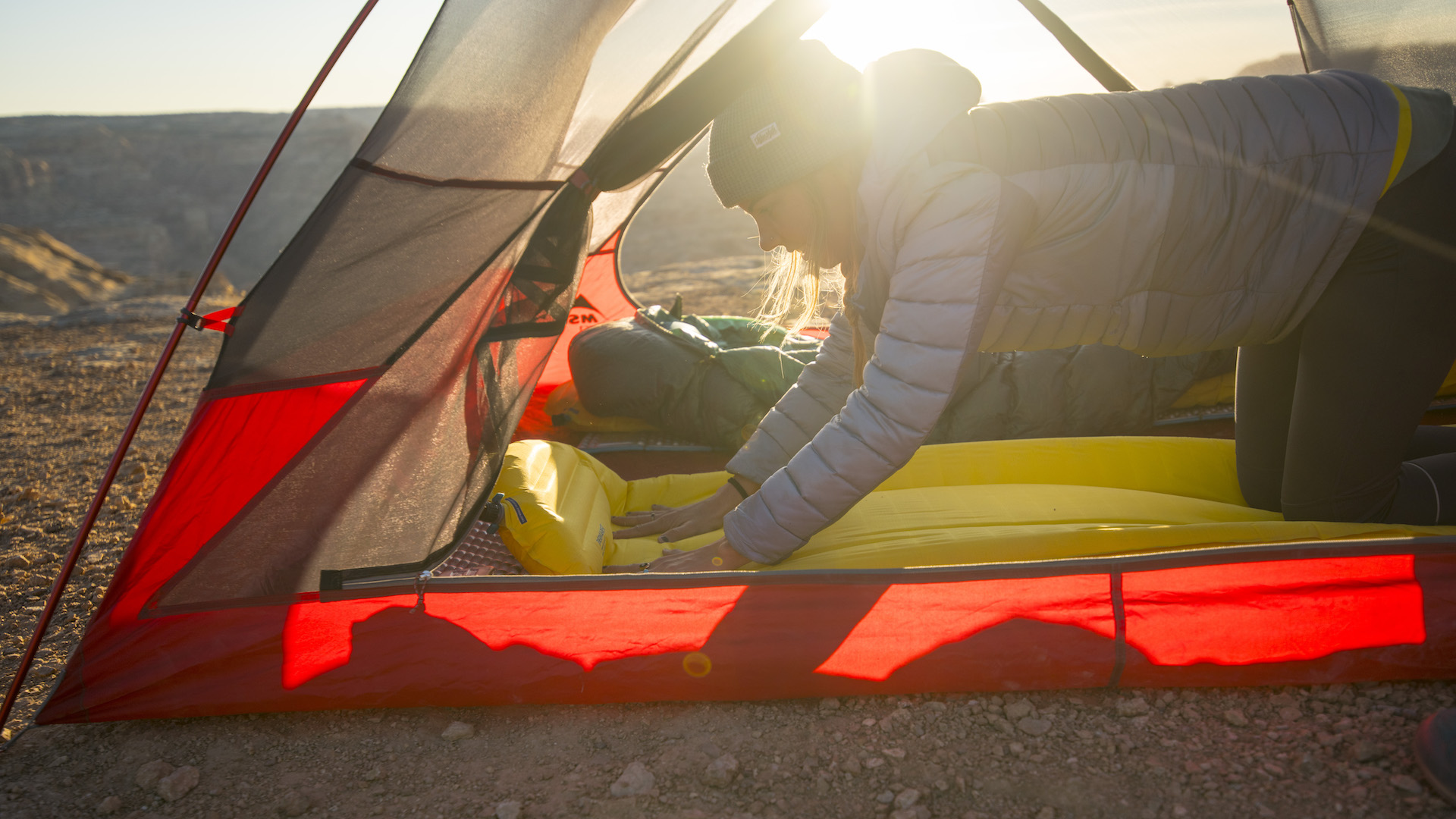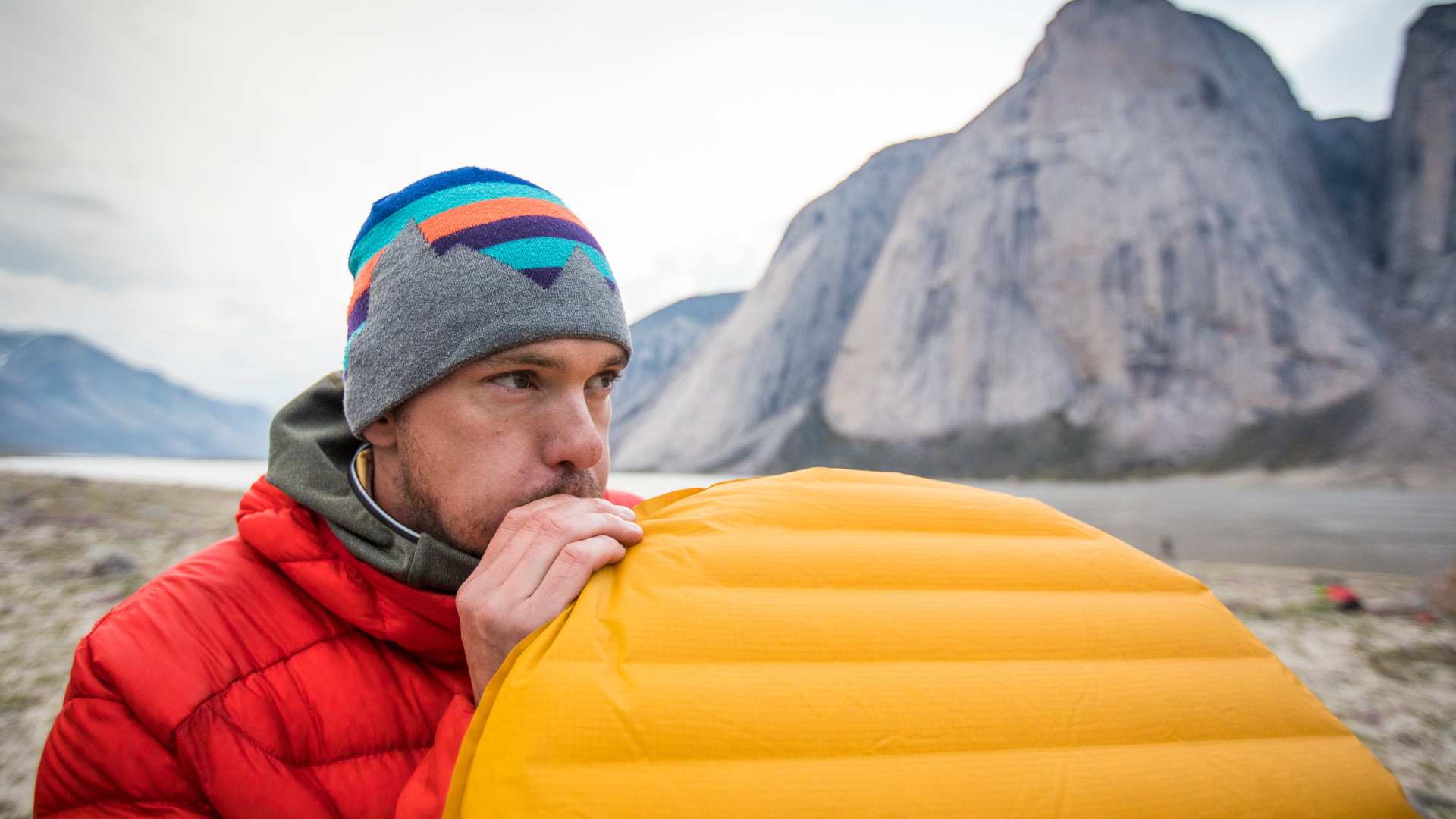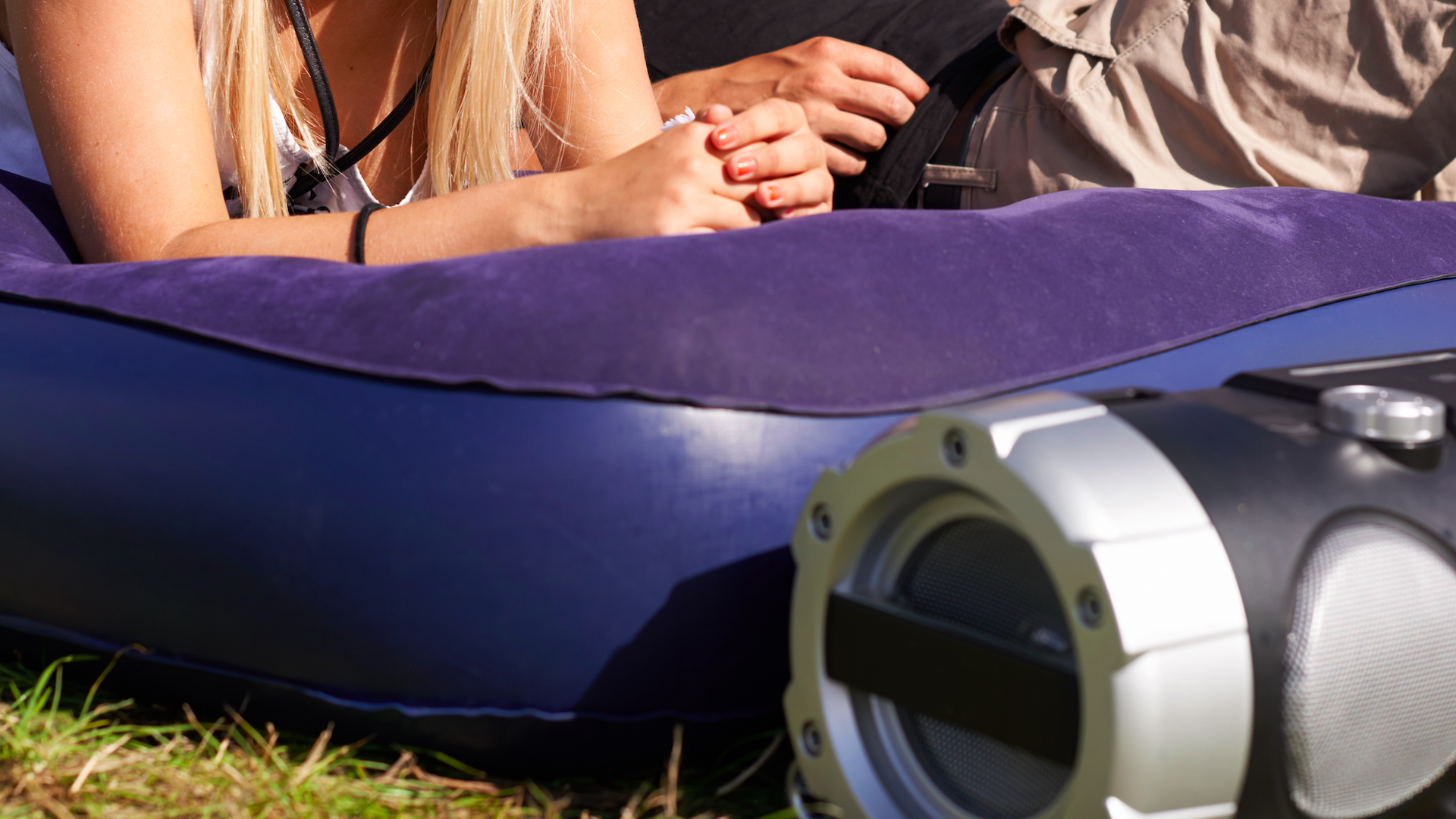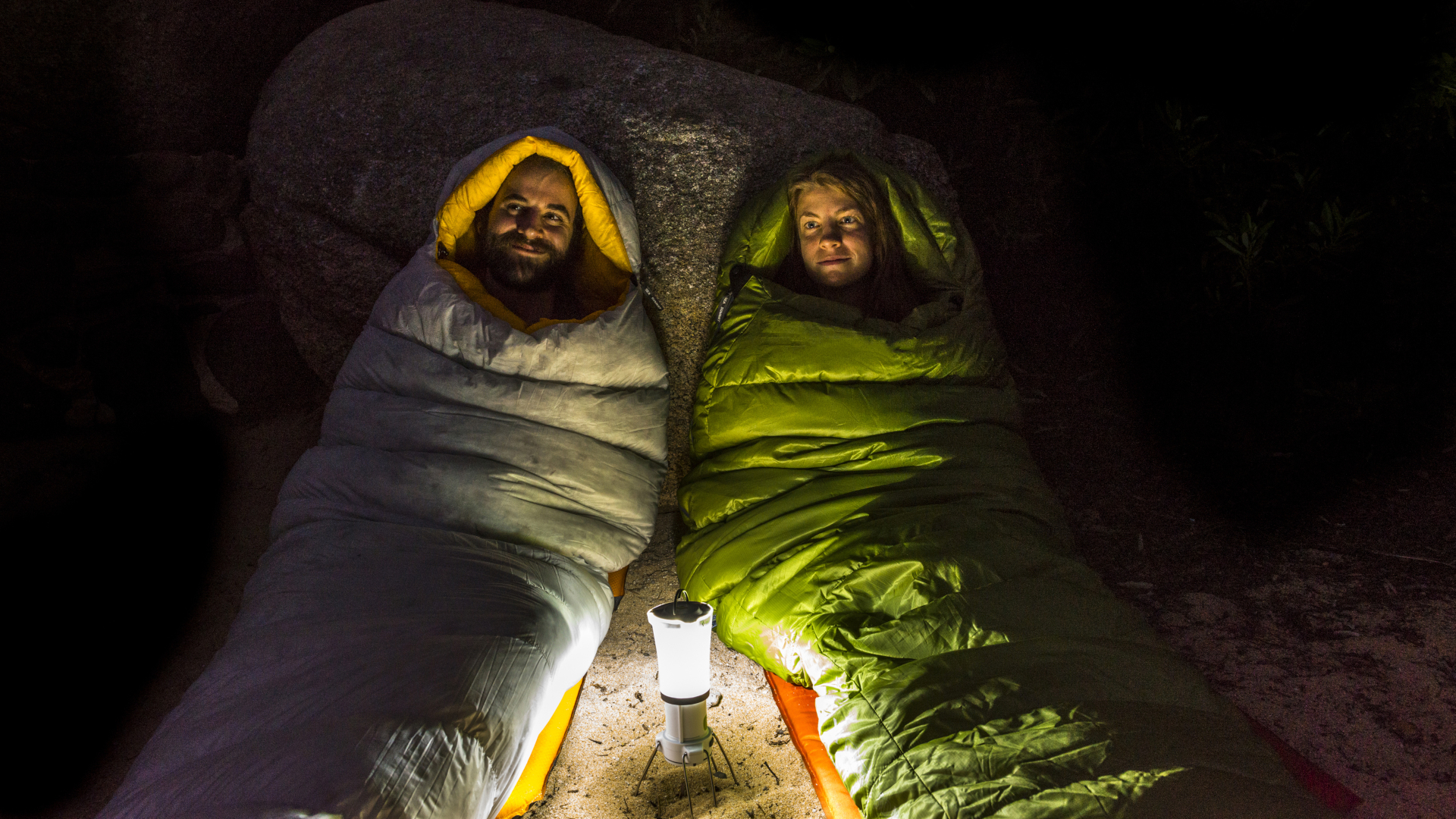How to build a camping sleep system
Learn all the ins and outs of building your camping sleep system to make sure you wake up refreshed and ready for a new day’s adventures

Getting ready for your first camping trip is super exciting, but it can also be a bit nerve wracking, especially if you’re one of those people that requires a good eight hours of sleep to function. Sure, being lulled to sleep by a soft breeze and awoken by the dawn chorus sounds delightful, but can you actually sleep without a bed? And how do you even choose from the myriad of sleeping products available? To help you answer these questions, we guide you through how to build a camping sleep system that suits your sleeping style and is appropriate for the conditions you’ll be camping in to make sure you wake up refreshed and ready for a new day’s adventures.

What is a sleep system?
Though it sounds pretty high tech and complicated, the term “sleep system” simply refers to the sleeping gear you bring camping. Essentially, it boils down to three parts:
- Sleeping pad or mattress
- Sleeping bag or quilt
- Camping pillow
Together, these three camping essentials make up what amounts to your bed when you’re camping.
How to build a camping sleep system
Even though we just said that a sleep system is fairly simple, how you choose each element will be determined by your sleeping style and the type of camping that you’re doing, and once you start to shop you’ll find that there are loads of different options for each piece of gear.
1. Sleeping pad or mattress

Though we often talk about sleeping on the ground when you’re camping, in truth, you’re not actually sleeping directly on the ground unless things have gone horribly wrong. In fact, you’ll camp with some kind of a portable mattress.
If you’re backpacking, this needs to be lightweight and packable. Back in the day, backpackers relied on simple foam pads that roll up a bit like yoga mats. These hard-wearing, lightweight and cheap pieces of gear are still very much in use, however they’ve been surpassed in popularity by the lighter and more packable inflatable sleeping pads, first introduced to the camping market by Therm-A-Rest. These newer sleeping pads keep you raised a little off the ground and provide much-needed insulation and some comfort, but pack away in your backpack when it’s time to move on. Here at Advnture, we’ve tried and tested loads of the best sleeping pads on the market, and one of our favorite lightweight pads is the Nemo Tensor Ultralight Sleeping Pad.
When choosing an inflatable sleeping pad, you’ll want to check its R-value to make sure it will provide enough warmth where you’re going camping. Basically, R-values range from 1 - 7 and the higher the number, the warmer the pad. If you’re camping in winter or at high altitude, look for a high R-value.
All the latest inspiration, tips and guides to help you plan your next Advnture!

Now, needless to say, your lightweight, portable sleeping pads can be used for any type of camping, including car camping, however, if you are driving in and you don’t have to carry everything on your back, you might want to consider a camping cot or a camping mattress instead. The latter will offer much more of a real-mattress feel, and while it’s more bulky and weighs more than a simple pad (and requires a pump to inflate it), you’ll sleep like a baby on it. Check out the Robens Polarshield 120 which is one of our favorites for year-round comfort.
If none of these options sound like what you’re looking for, check out our guide to sleeping pad alternatives to see if you can find the perfect sleeping companion.
2. Sleeping bag or quilt

Once you’ve got your mattress sorted out, you’ll need a blanket for keeping warm and comfortable and the classic camping solution for all types of camping has long been the sleeping bag. Your basic sleeping bag is made with either natural or synthetic down to provide insulation and zips up to form a cozy cocoon that you sleep inside.
When choosing a sleeping bag for backpacking, once again weight and packability are the top considerations, and you’ll find that a down bag is almost always lighter and will pack down smaller than a synthetic bag (though synthetic bags are catching up in this regard). Natural down doesn’t insulate when wet, however, while synthetic down does, so if you’re camping somewhere very humid or rainy, you’ll want to consider synthetic down like the Rab Solar Eco 3 which we consider one of the best sleeping bags out there.
Sleeping bags come in different comfort ratings, which doesn’t refer to their plushness but rather at what temperature you’ll be comfortable in, so again you’ll need to consider what season and climate you're going to be using yours in. You may need to own more than one sleeping bag, or look for a really versatile model such as the North Face One Bag.
Another consideration is your sleeping bag shape. Back in the day, sleeping bags were all rectangles, and these are still the best shape for those of you who are side sleepers. These days, however, the mummy-style bag is definitely more popular because it seals out the drafts better and weighs less.

If you’re backpacking and looking to shed weight, you should definitely look into camping quilts, which forgo the zip and have half the amount of material than a bag, relying on your sleeping pad to provide warmth from beneath. Camping quilts are also really great for side sleepers, super lightweight and great for summer and mild conditions and we love the Sea to Summit Ember II Down.
If you’re car camping or glamping, all of the above work, but honestly you can also easily just bring your comforter from home and swaddle yourself in home comfort.
Still looking for the perfect sleep solution? Check out our ideas for sleeping bag alternatives.
3. Camping pillow

Finally, you need a camping pillow to complete your camping sleep system, especially if you’re a side sleeper. When it comes to camping pillows, you don’t need to worry about things like warmth and comfort ratings, you just need to think about how much room you have available and what you can feasibly carry.
Camping pillows come in a range of types from inflatable ones like Alpkit Drift that are great for backpacking to compressible pillows such as the Sierra Designs Dridown Pillow which are more suited to car camping. If you’re looking to keep things really light and basic, you can always roll up a fleece jacket or put some clothes inside a stuff sack, too.
This article is part of Advnture's Sleep Week 2022 (running from Monday 22 August to Sunday 28 August), our in-depth look at how to choose the best gear for sleeping outdoors and get a better night's rest in the backcountry.
Julia Clarke is a staff writer for Advnture.com and the author of the book Restorative Yoga for Beginners. She loves to explore mountains on foot, bike, skis and belay and then recover on the the yoga mat. Julia graduated with a degree in journalism in 2004 and spent eight years working as a radio presenter in Kansas City, Vermont, Boston and New York City before discovering the joys of the Rocky Mountains. She then detoured west to Colorado and enjoyed 11 years teaching yoga in Vail before returning to her hometown of Glasgow, Scotland in 2020 to focus on family and writing.

